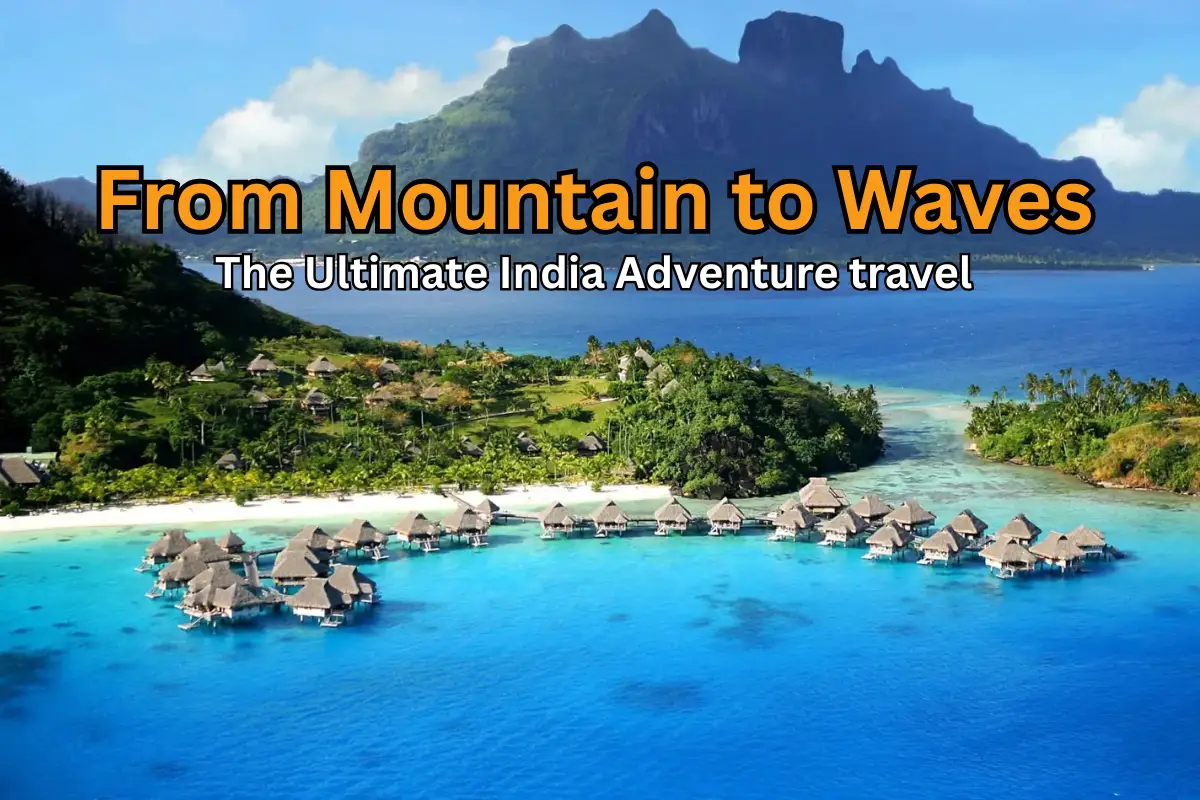From Mountain to Waves: The Ultimate India Adventure travel

India is one of the best places in the world for India adventure travel. You can wake up to crisp mountain air in the Himalayas and, within days, be dipping your toes in warm southern waters. That walk from high ridges to sandy shores gives you forests, rivers, deserts, temples, and coasts — often all on one trip. This guide will help you plan a clear, safe, and joyful India adventure travel experience. Read it all the way through and you should have no major doubts left.
Why India for adventure travel?
When people say India adventure travel, they mean many things. It includes trekking high in the mountains, white-water rafting on wild rivers, paragliding over hill towns, or learning to surf on a tropical beach. India’s size and variety mean every day can feel new. One morning you can be on a peaceful ridge; the same evening you can try fresh seafood in a small coastal village. That contrast — cool peaks and warm waves — is what makes India adventure travel special.
Quick planning: visas and fees
Before you book, check your visa needs. Most visitors use the official portal, India Visa Online, to apply for an e-Visa or a regular visa. That site explains the steps for each visa type and shows which ones apply to your nationality.
Visa costs change by country and by visa type. The Indian government publishes a country-wise fee table you can view to confirm India Visa Fees for your passport. Make sure you check the current fee list and add any bank or processing charges before you pay.
(If you put links on your site, anchor them with the phrases India Visa Online and India Visa Fees so readers find official information quickly.)
Best time to travel
Weather matters for both mountains and coasts. For most mountain treks, the best months are late spring to early autumn (roughly April–October). For beach and surf trips in the south, winter months (November–March) are usually the best — cooler, dry, and sunny. If you want both in one trip, try shoulder months like October–November or February–March for gentler weather in both places. Travel guides and tourism sites give more region-by-region detail if you need it.
Must-try activities
- Trekking and day-hikes: The Himalayas have trails for all levels. If this is your first high-altitude experience, join a local guide and take time to acclimatize.
- River rafting: Rivers such as the Ganges and Beas have sections with exciting rapids and beautiful canyon views.
- Paragliding: Bir-Billing in Himachal Pradesh is world-famous for paragliding and is a great place to try tandem flights with experienced pilots.
- Surfing and snorkeling: Kerala, Goa, and parts of Tamil Nadu offer surf lessons for beginners and calm spots for snorkeling.
All these activities fit into the broad idea of India adventure travel and can be mixed into one trip.
Permits and local rules
Some mountain roads and border zones require permits. For example, visiting Rohtang Pass or certain areas of Ladakh often needs an online permit or an inner-line permit. These permits help protect fragile mountain ecosystems and control traffic. Check the official permit site or local district pages before you travel so you do not face last-minute problems.
Sample 12–14 day “Mountain to Waves” route
Day 1–4: Fly into Delhi and travel to a Himalayan base like Manali or Dharamsala. Do easy hikes and local walks.
Day 5–7: Take a longer trek or try river rafting and local cultural experiences.
Day 8: Travel south — fly or take a scenic train toward Goa, Kerala, or southern Tamil Nadu.
Day 9–12: Beach time — surf lessons, coastal village walks, seafood markets, and slow sunsets.
Day 13–14: Rest, relax, and return home.
This route shows how India adventure travel can balance action with rest. You can extend it to include Ladakh, Sikkim, the Andaman Islands, or more time in the mountains or sea.
Safety, health, and budget tips
- Safety: Use licensed guides for extreme activities and for high-altitude treks. Follow local safety advice and weather warnings.
- Health: Carry a basic medicine kit and any regular prescription medicines. Acclimatize gradually at higher altitudes to lower the risk of altitude sickness.
- Budget: Costs vary widely. Backpackers can travel on a small budget using local transport and guesthouses. If you prefer comfort, small private tours and mid-range hotels are easy to find. Guided adventure packages simplify logistics if you do not want to plan every detail.
Smart packing
Bring layers for mountain cold and light clothing for the beach. Sturdy hiking shoes, a hat, sunscreen, a refillable water bottle, and a small first-aid kit are essential. For special gear (like surfing wetsuits or technical mountaineering kit), consider renting locally instead of carrying heavy items.
Final words
If you want real variety and strong memories, choose India adventure travel. The mix of quiet mountain mornings and slow beach evenings makes each day different and rich. Before you go, double-check India Visa Online rules and confirm India Visa Fees for your nationality. With good planning — the right permits, sensible packing, and local guidance — your trip from mountain to waves will be safe, exciting, and deeply rewarding.
